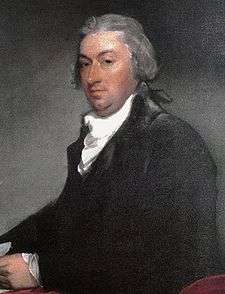United States Secretary of Foreign Affairs
The United States Secretary of Foreign Affairs was a position that existed in the United States government from January 10, 1781, to September 15, 1789.
History
The Articles of Confederation permitted the Confederation Congress to select "such committees and civil officers as may be necessary for managing the general affairs of the United States."
On January 10, 1780, the Confederation Congress created the Department of Foreign Affairs.[1]
On August 10, 1781, Congress selected Robert R. Livingston, a delegate from New York, as the first Secretary for Foreign Affairs. Livingston was unable to take office until October 20, 1781. He served until June 4, 1783 when he was succeeded by John Jay, who served until March 4, 1789, when the government under the Articles of Confederation gave way to the government under the Constitution.
| No. | Portrait | Name | State of Residence | Took Office | Left Office |
|---|---|---|---|---|---|
| 1 |  |
Robert R. Livingston | New York | October 20, 1781 | June 4, 1783 |
| 2 | .jpg) |
John Jay | New York | May 7, 1784 | March 4, 1789 |
The office of Secretary of Foreign Affairs and the Department of Foreign Affairs were reinstated by a law signed by George Washington on July 27, 1789. John Jay retained the post on an interim basis, pending the return of Thomas Jefferson from France. However, on September 15, 1789, before Jefferson could return to take the post, Washington signed into law another act which changed the name of the office from "Secretary of Foreign Affairs" to "Secretary of State," changed the name of the department to the Department of State, and added several domestic powers and responsibilities to both the office of secretary and the department.
| No. | Portrait | Name | State of Residence | Took Office | Left Office |
|---|---|---|---|---|---|
| – | .jpg) |
John Jay | New York | ||
| July 27, 1789 | September 15, 1789 | ||||
| September 15, 1789 | March 22, 1790 | ||||
On March 22, 1790, Thomas Jefferson took office as the first United States Secretary of State. For subsequent office holders, see List of Secretaries of State of the United States.
References
- ↑ "Secret Committee of Correspondence/Committee for Foreign Affairs, 1775–1777". U.S. Department of State. Archived from the original on February 28, 2010. Retrieved January 17, 2010.
